Gladioli are all of the species within the Gladiolus genus. You might have seen gladioli in flower arrangements, and they’re most typically used in arrangements for funerals. They come in many colors from yellow to purple to red, and add a bright pop of color to any garden. There’s much more to these unique flowers that you may not know, so here are 11 fun and interesting facts about gladioli.
They’re Also Called Sword Lilies

They get the name sword lilies from their upright, sword-like appearance.
©Olga S photography/Shutterstock.com
Despite the fact that gladiolus flowers aren’t closely related to lilies, they’re called sword lilies. They’re named after the shape that they grow in, taking on the appearance of a sword. The word ‘gladiolus’ translates literally to little sword, which is likely what the person naming them thought they looked like. Gladiolus flowers are also called cornflowers because they grow upright, appearing similar to stalks.
Gladioli Are Native to South Africa
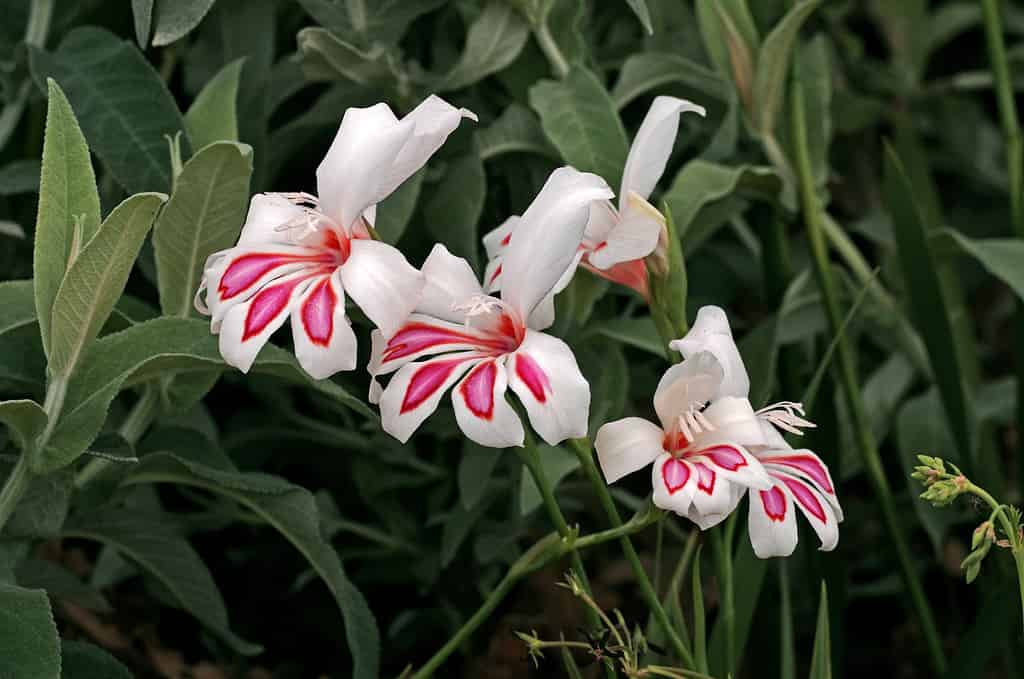
They were first brought to Europe in the 1700s and spread from there.
©Gardens by Design/Shutterstock.com
Gladioli are native to South Africa and grow across nearly every region. There are around 260 species of gladiolus flowers, each with a slightly different appearance and habitat. Most of the gladioli grow in the Western Cape and eastern highlands regions. They grow best in rocky areas that receive plenty of rainfall.
They’re the Official Flower of August
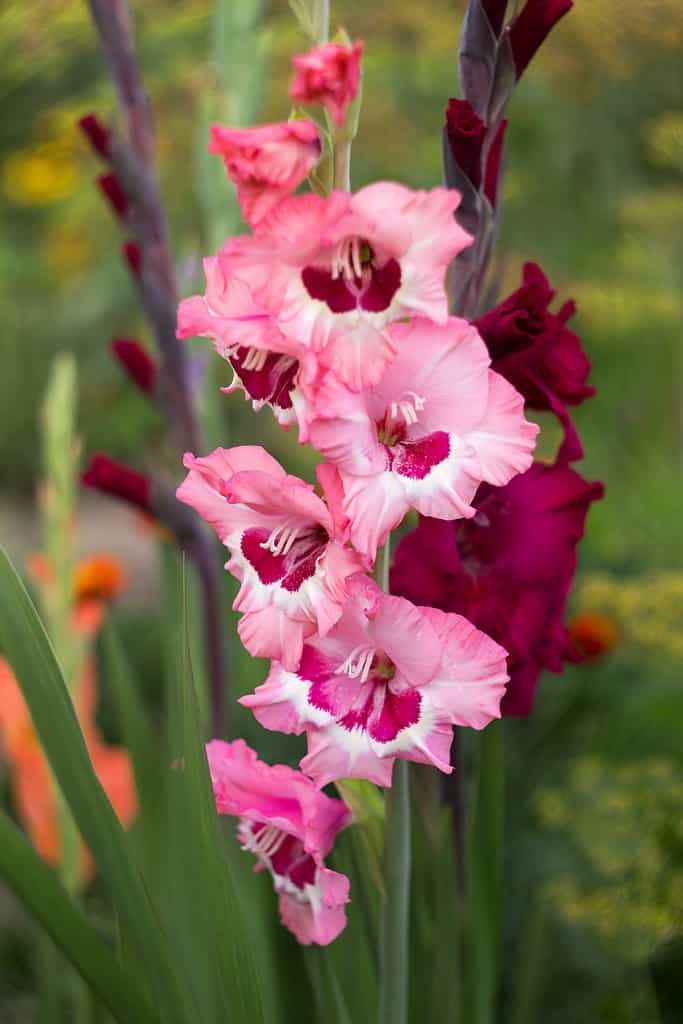
Each month has at least one birth flower, but August has two.
©Nikilev/Shutterstock.com
If you were born in August, you may not know that the gladiolus is your birth flower. It symbolizes honesty and a strong personality, two characteristics that may apply to people with August birthdays. August has two birth flowers: the gladiolus and the poppy. They look great in an arrangement together for that special someone with an August birthday.
Gladioli Are Part of the Iris Family

Take a look at these iris flowers, and you’ll be able to see how they’re part of the same family as gladiolus.
©Florence-Joseph McGinn/Shutterstock.com
Both gladiolus flowers and irises are part of the Iridaceae family. All of the species within the family are perennials with grass-like leaves that grow upright. They grow from corms, bulbs, or rhizomes, meaning that they can return year after year.
There Are Tons of Colors to Choose From
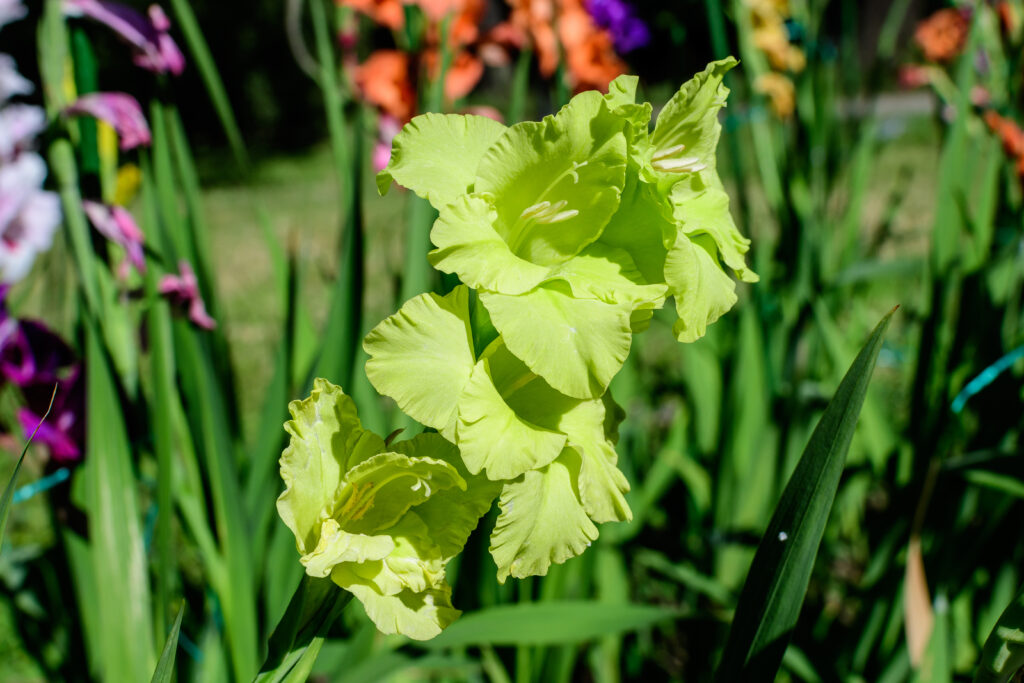
Gladiolus flowers even come in green, the only color that you won’t find is blue.
©iStock.com/Cristina Ionescu
One great thing about gladioli is that you can be sure that there’s one for you. With options in nearly every color, and even some bi-color varieties, you can select a couple of gladioli to fit your garden color scheme. Keep in mind if you’re growing them for arrangements that the different colors symbolize different things. Red gladioli represent a steadfast, passionate love, while purple represents grace and mystery.
Gladioli Are Easy to Grow
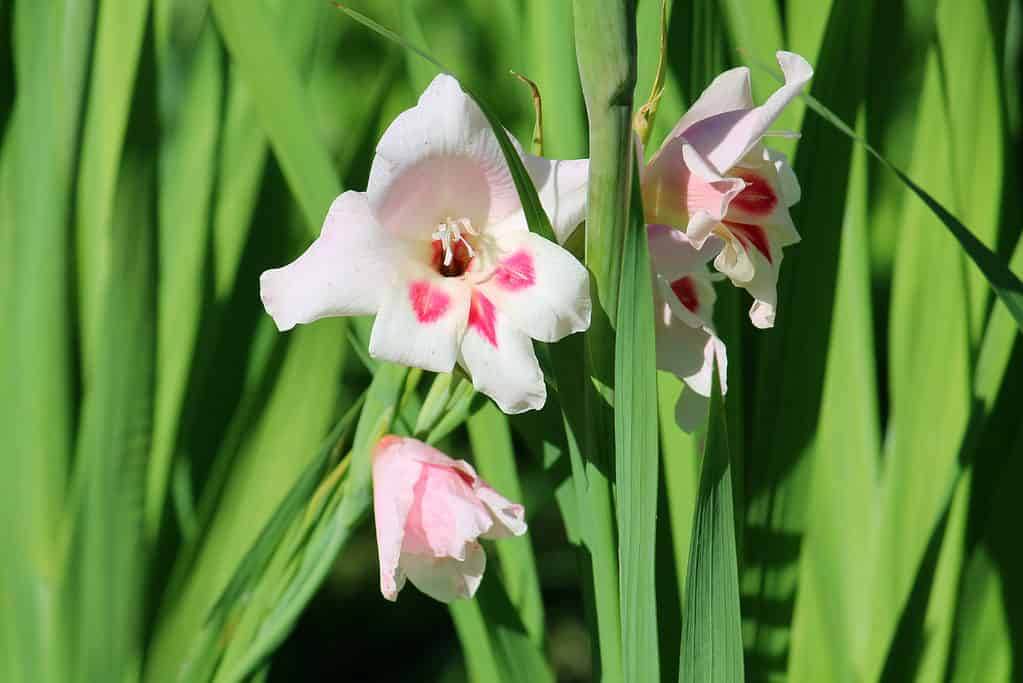
Gladioli are great flowers to consider if you’ve never gardened before.
©iStock.com/kazakovmaksim
If you’re a beginner gardener, gladioli are an excellent choice for you to grow. You’ll buy them in corms (which are like bulbs) and plant each one about 6 inches into the soil. You can also grow gladioli in pots as long as they are in direct sunlight. One great tip when it comes to planting gladioli is to plant them in sessions every few weeks. That way, you’ll have blooms all through the summer and autumn.
They’re a Popular Cut Flower

Since they come in many colors, they’re a popular choice for flower arrangements.
©iStock.com/Olga Niekrasova
Gladioli are popular for flower arrangements because they make great cut flowers. They’re a great type of flower to consider adding if you’re planning to grow a cut flower garden. They’re mainly used in funeral arrangements, but as gladioli have gotten more popular their use has spread to many other types of bouquets.
Gladioli Are Commonly Used in Folk Medicine
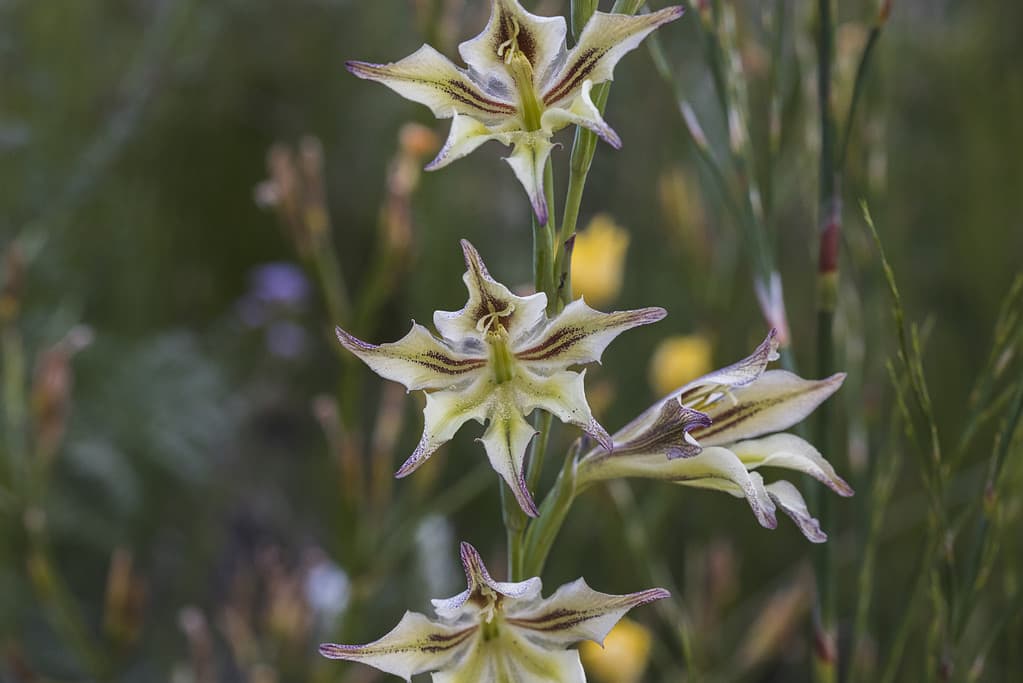
There may be potential in the future for gladioli to be used in modern medicine.
©Madelein_Wolf/iStock via Getty Images
Despite the fact that parts of the plant are poisonous, gladioli were used in folk medicine for a long time and still are in some places. The English used the corms to bandage cuts and extract splinters, as well as internally as a treatment for colic.
In scientific studies, researchers discovered a chemical in the plant that works like antidepressants in studies on rats. While there aren’t any substantial claims yet as to the medicinal properties of gladioli, more research may lead to new uses for the plant.
Gladioli Bloom For Two Weeks
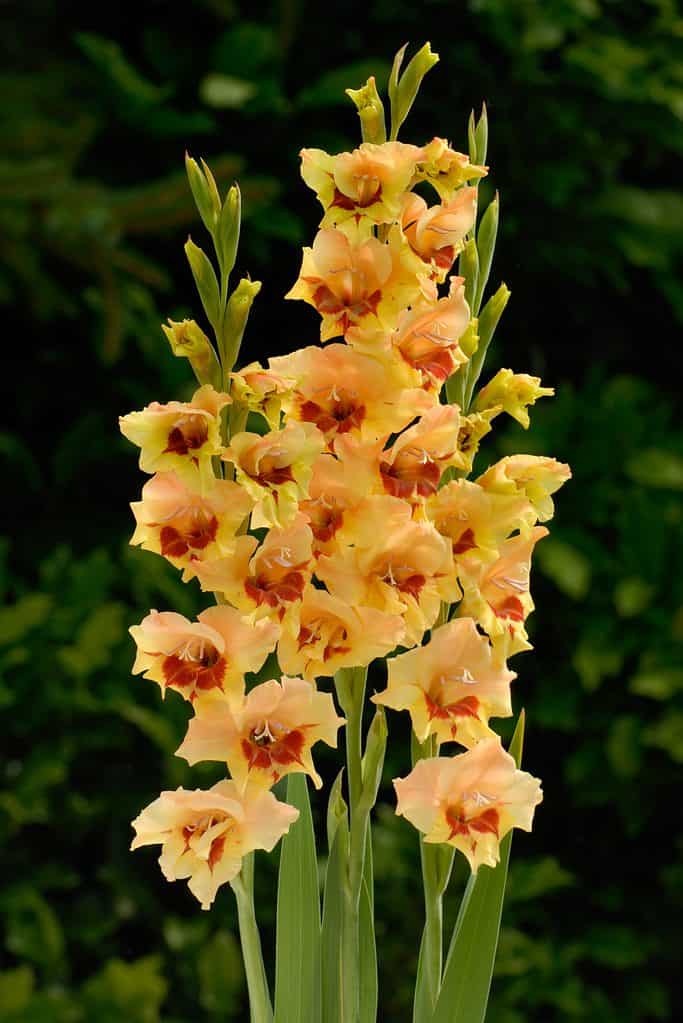
If you’re looking for long-lasting blooms, gladioli are great flowers to consider.
©Walter Erhardt/Shutterstock.com
Unlike some of the shorter blooming flowers like hibiscus, gladiolus flowers bloom for quite a long time. The vibrant blooms often last up to two weeks, which is another reason why they are such popular cut flowers.
They’re a Favorite of Pollinators
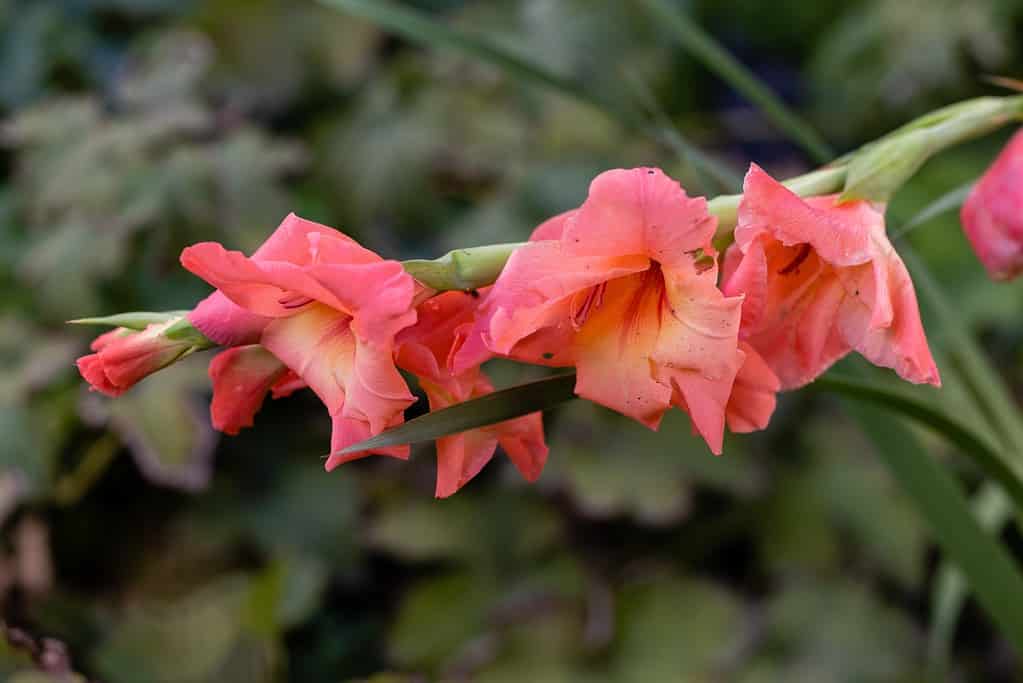
Hummingbirds are most attracted to red and orange flowers.
©Jose Luis Vega/Shutterstock.com
While around half of gladiolus flowers are pollinated by bees, they’re also a favorite of butterflies and hummingbirds. If you’re looking for a flower to attract tons of pretty pollinators to your garden, gladioli are a perfect choice for you! If you’re looking to attract hummingbirds specifically, try planting red or orange gladioli.
Don’t Forget to Save the Corms
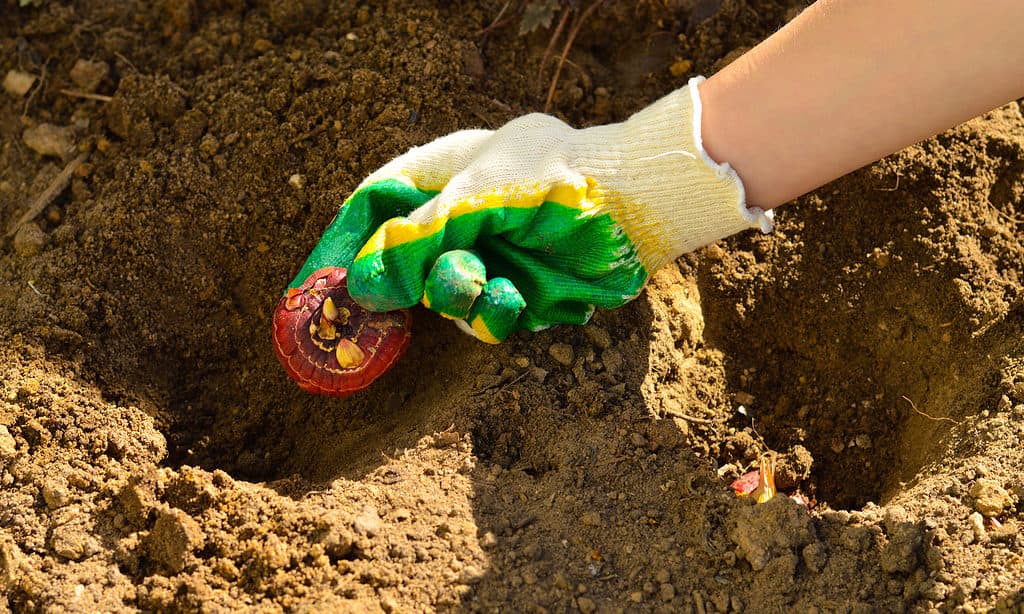
You may not see any green in the corms, but they’re still alive!
©iStock.com/Irina Starikova
It might appear that your gladiolus plants are dead, but they’re still alive in their corms. After the flowering season is over, dig up your corms and store them until spring comes around. You can replant them in your garden and your gladioli will regrow year after year!
The photo featured at the top of this post is © iStock.com/Jareck
Thank you for reading! Have some feedback for us? Contact the AZ Animals editorial team.







